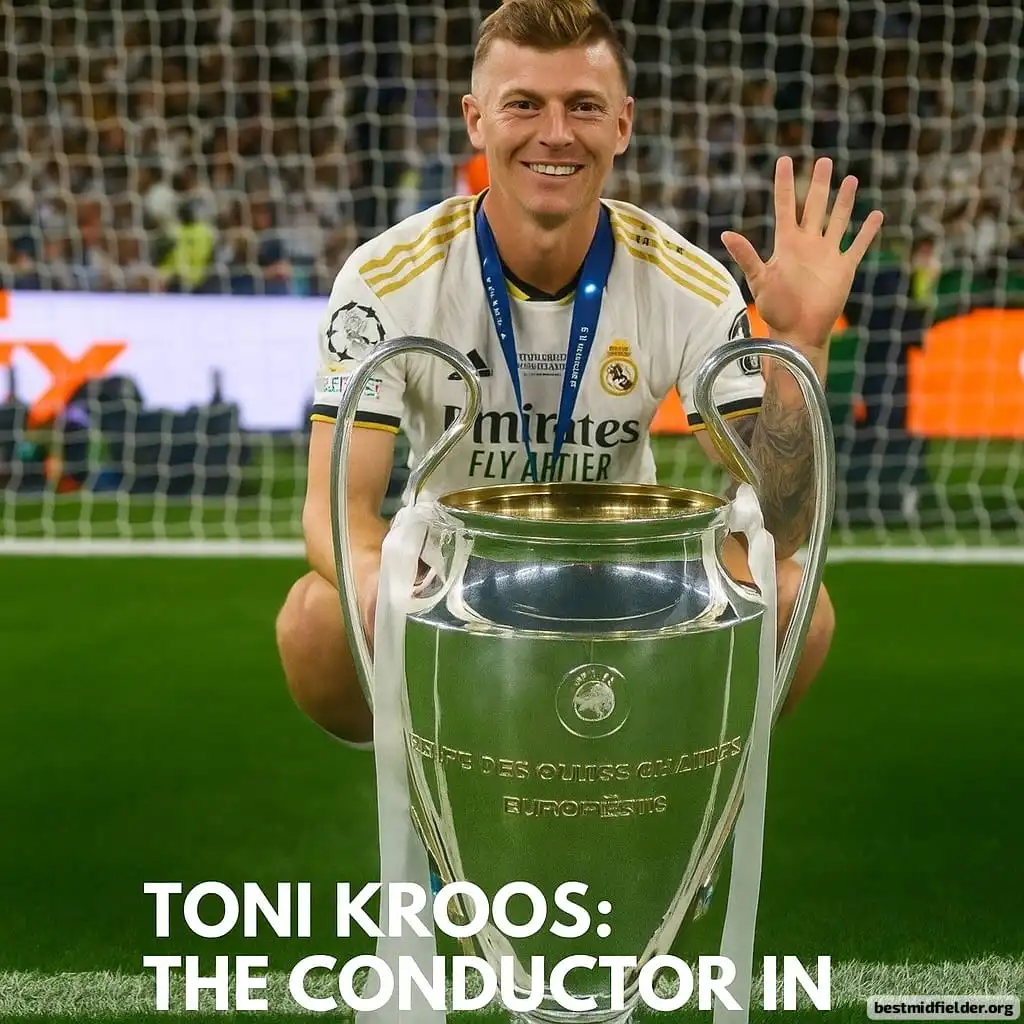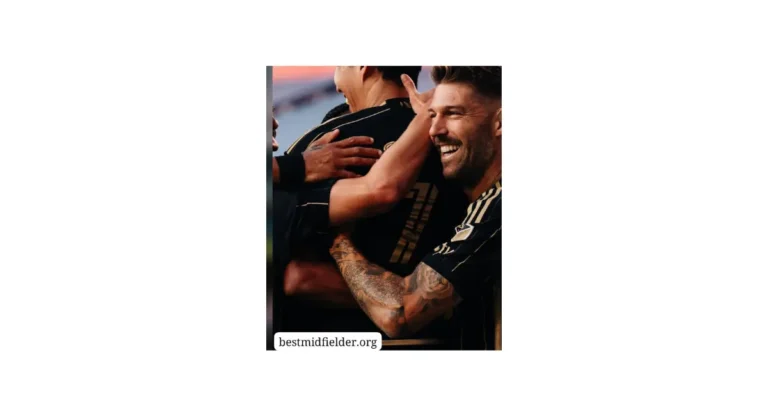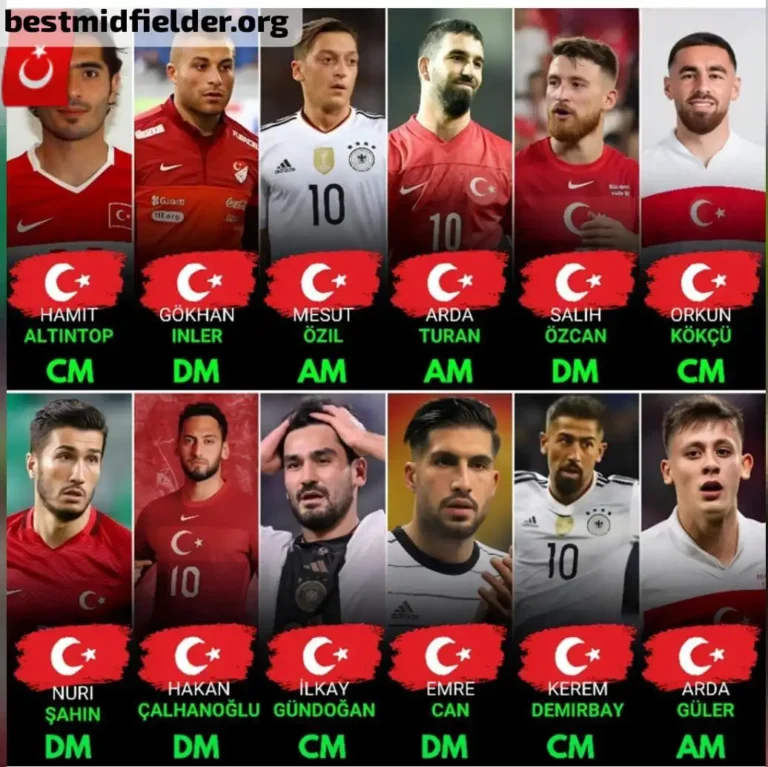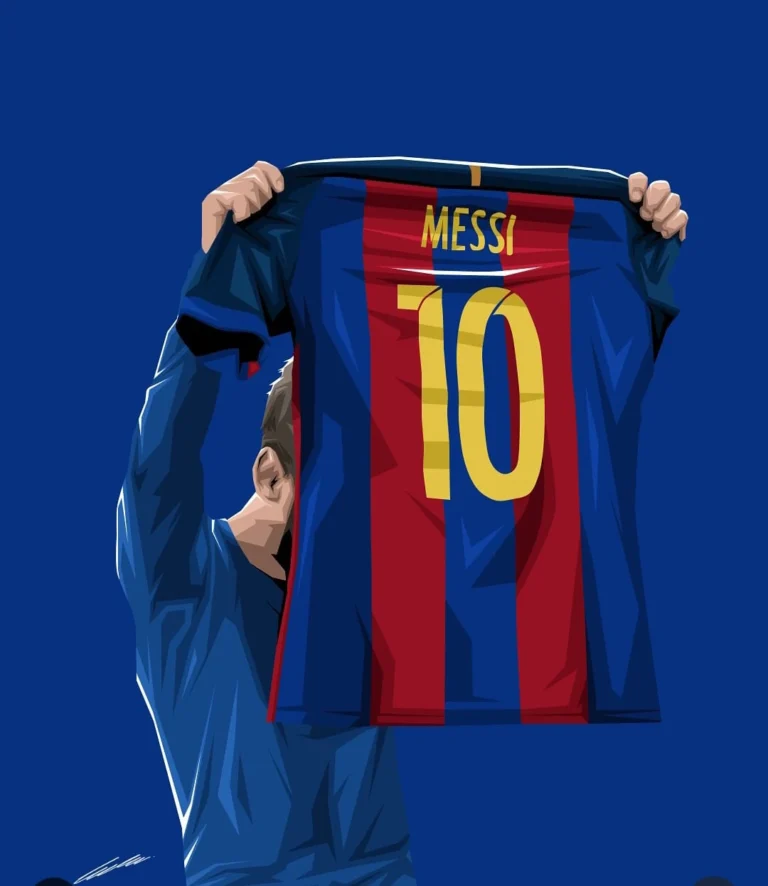Toni Kroos: The Conductor in Cleats
Toni Kroos is The roar of the Santiago Bernabéu fades into a expectant hush. The stage is not one of velvet and gilt, but of emerald grass and white chalk lines. The orchestra is not seated, but poised in royal white, awaiting their cue. And the conductor does not raise a baton; he simply opens his palms, ready to receive the ball. This is the concert hall of Toni Kros, and for a decade, he has been its undisputed Maestro.
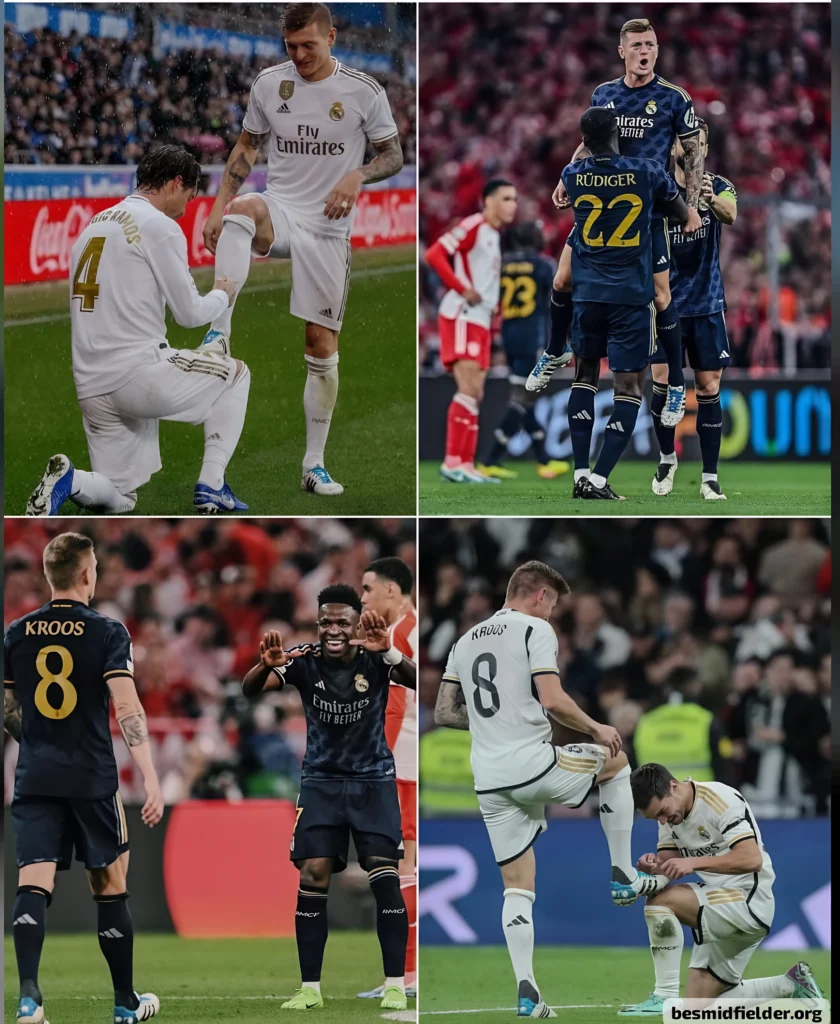
To the untrained eye, his work might seem simple, almost minimalist. But to watch Kroos play is to witness a grand symphony composed in real-time. Each player is an instrument under his command: the blistering runs of Vinícius Jr. a soaring violin solo, the relentless engine of Valverde a steady percussion, the elegant grace of Modrić a harmonious cello. Kroos, from his central podium, directs them all not with frantic gestures, but with a glance, a pointed finger, and most importantly, the stroke of his boot.
His passing is not merely kicking a ball; it is a language. A short, side-footed cue to a centre-back is a gentle adagio, a instruction to breathe, to reset, to draw the opposition in. Then, in a heartbeat, he sees the opening. His body pivots, a subtle yet profound gesture, and he unleashes a piercing, forty-yard allegro that cuts through the noise and finds its target with impossible precision. This is the crescendo. This is the moment the entire movement has been building towards. He doesn’t just play the pass; he composes the entire play with it, guiding the ball to the exact note where the harmony of his team is most potent.
The world often celebrates the loudest solos
The crashing cymbal of a goal, the roaring trumpet of a last-minute winner. These are the moments that dominate the headlines. But Kroos’s genius was in the quiet symphony of possession that made those solos possible. He was the steady, metronomic rhythm underlying the entire performance. He controlled the silence between the notes, understanding that what isn’t played is just as important as what is. He mastered the art of the pause, holding the ball for a half-second longer to pull an opponent out of position, creating space for the next, more devastating phrase.
watch this video on YouTube you will love German sniper: Toni Kross Master Of Simplicity
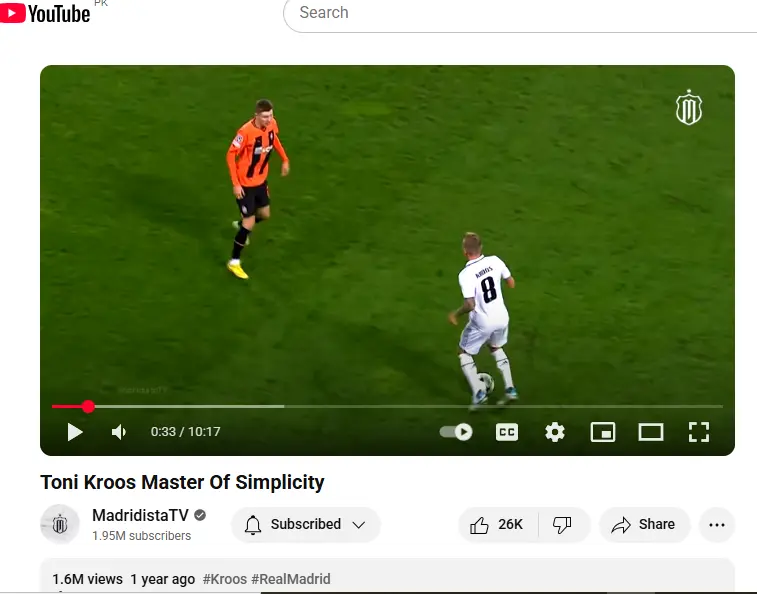
For years, he set the tempo for the most dominant club in Europe. He could slow a frantic match to a manageable andante, lulling opponents into a false sense of security, before suddenly launching a furious prestissimo attack that would leave them scattered and defeated. He was the calm at the heart of the storm, the unwavering pulse in a game of chaos.
And so, at the pinnacle of his art, he chose his finale. His last performance was not a farewell tour of diminishing returns, but a perfect, crowning masterpiece. He exited the stage on the highest note imaginable: a sixth Champions League title, a victory composed in no small part by his own relentless, elegant rhythm. He took his final bow in Berlin, the city of his greatest triumph with Germany, leaving the entire footballing world in a standing ovation.
Toni Kros: Timeless Brilliance
The symphony is over now. The conductor has left the podium. But the music he composed a decade of flawless, effortless control echoes on. It is a timeless masterpiece, a reminder that true genius is not always found in the complex and the loud, but often in the simple, the quiet, and the profoundly beautiful. The conductor has left the building, but his score remains for all to study, and forever admire.
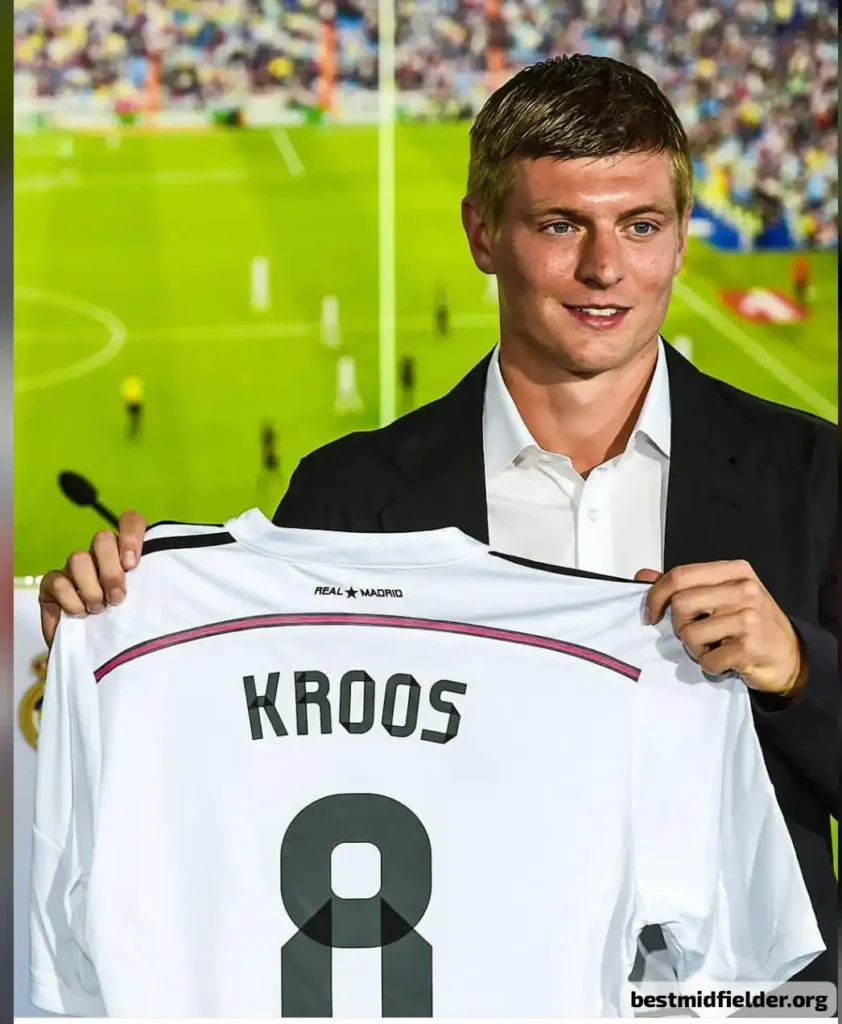
Conclusion
Kroos was more than just a midfielder; he was the game’s silent architect, the conductor in cleats who turned football into an orchestra of rhythm and flow. From Bayern Munich to Real Madrid and the German national team, his legacy is not only in trophies but in the way he defined tempo with unmatched precision. Whether fans remember him in the iconic Toni Kros Germany kit or the elegant Real Madrid Toni Krros jersey and number, his impact goes far beyond clothing or statistics. His artistry lies in the way he made football look effortless an eternal reminder that the quietest player on the pitch can create the loudest legacy.
FAQS
Q1: What football boots did Toni Kroos wear throughout his career?
Kroos famously stuck with his trusted Adidas 11 Pro Kroos boots for most of his career. While modern players constantly changed models, Kroos preferred the comfort and control of these classic boots, making his Toni football boots iconic among fans.

Q2: What is special about Toni Kroos’ shoes?
The Kroos shoes especially the Toni Kroos shoe design of the Adidas 11 Pro—are celebrated for their timeless style and durability. Unlike flashy models, these boots reflected Kroos’ calm, no-nonsense personality on the pitch.
Q3: What is Toni Kroos’ vermogen (net worth)?
As of his retirement, Kroos vermogen is estimated to be in the tens of millions, thanks to his Real Madrid contracts, endorsements, and long career at the highest level of football.
Q4: What is Toni Kroos’ leeftijd (age)?
For fans searching “Toni Kroos leeftijd,” he was born on January 4, 1990. This means he retired in his mid-30s, still at a level where many considered him one of the best midfielders in the world.
Q5: Is “Toni Kross” or “Toni Cross” the same as Toni Kroos?
Yes many fans misspell his name as Toni Kross or Toni Cross, but the correct spelling is Kroos. No matter how you spell it, his reputation as a football genius remains.
Q6: Where can I buy a Kroos jersey?
Fans can find the Toni Cross jersey in both Real Madrid and Germany editions. The Real Madrid Toni Kroos jersey and number (8) is one of the most popular, while the Toni Kroos Germany kit reminds fans of his 2014 World Cup triumph.
Q7: What makes Toni Kroos football shoes different from modern boots?
The Toni Krroos football shoes stood out because he wore the same style for over a decade. While others switched to flashy updates, Kroos proved that performance was about precision, not marketing.

